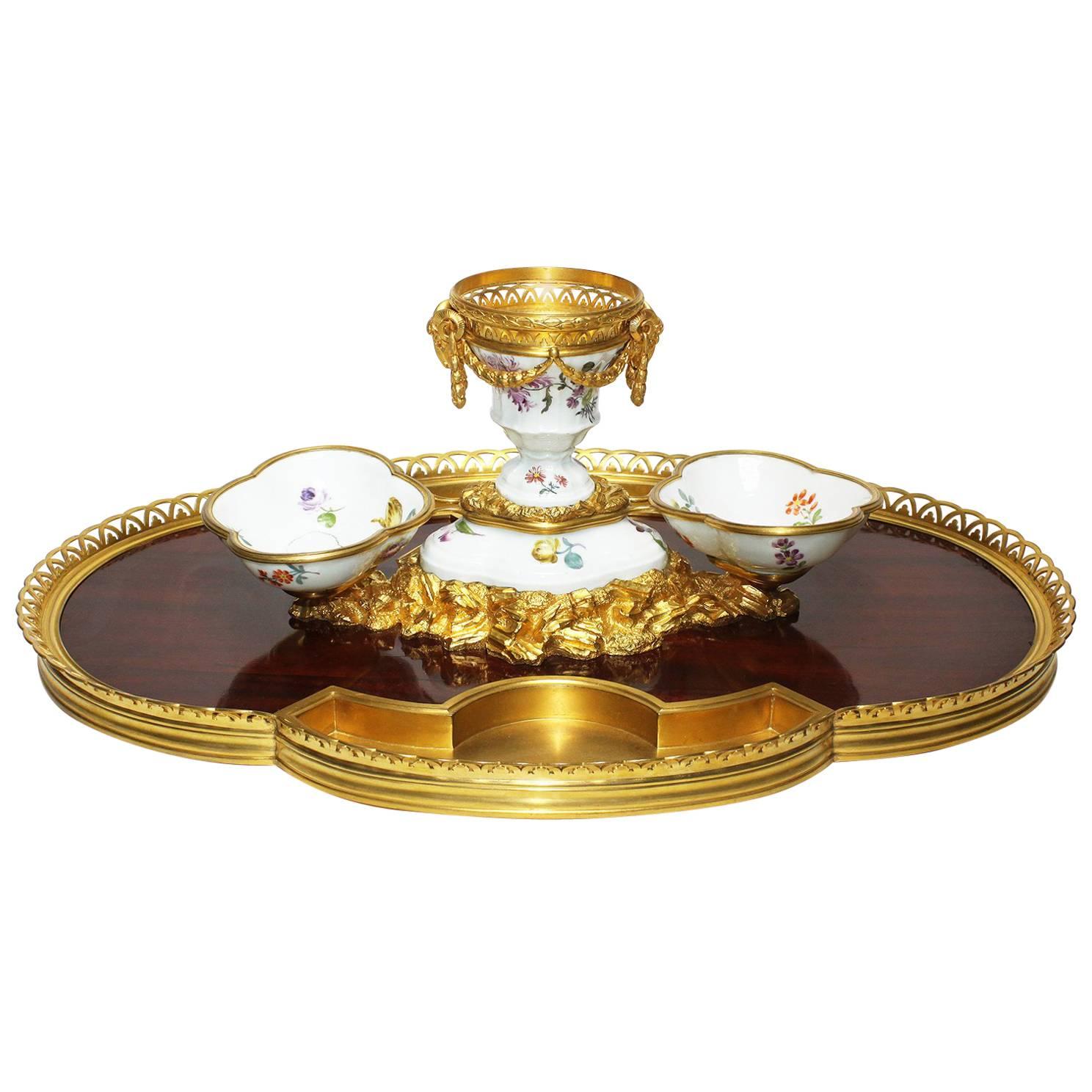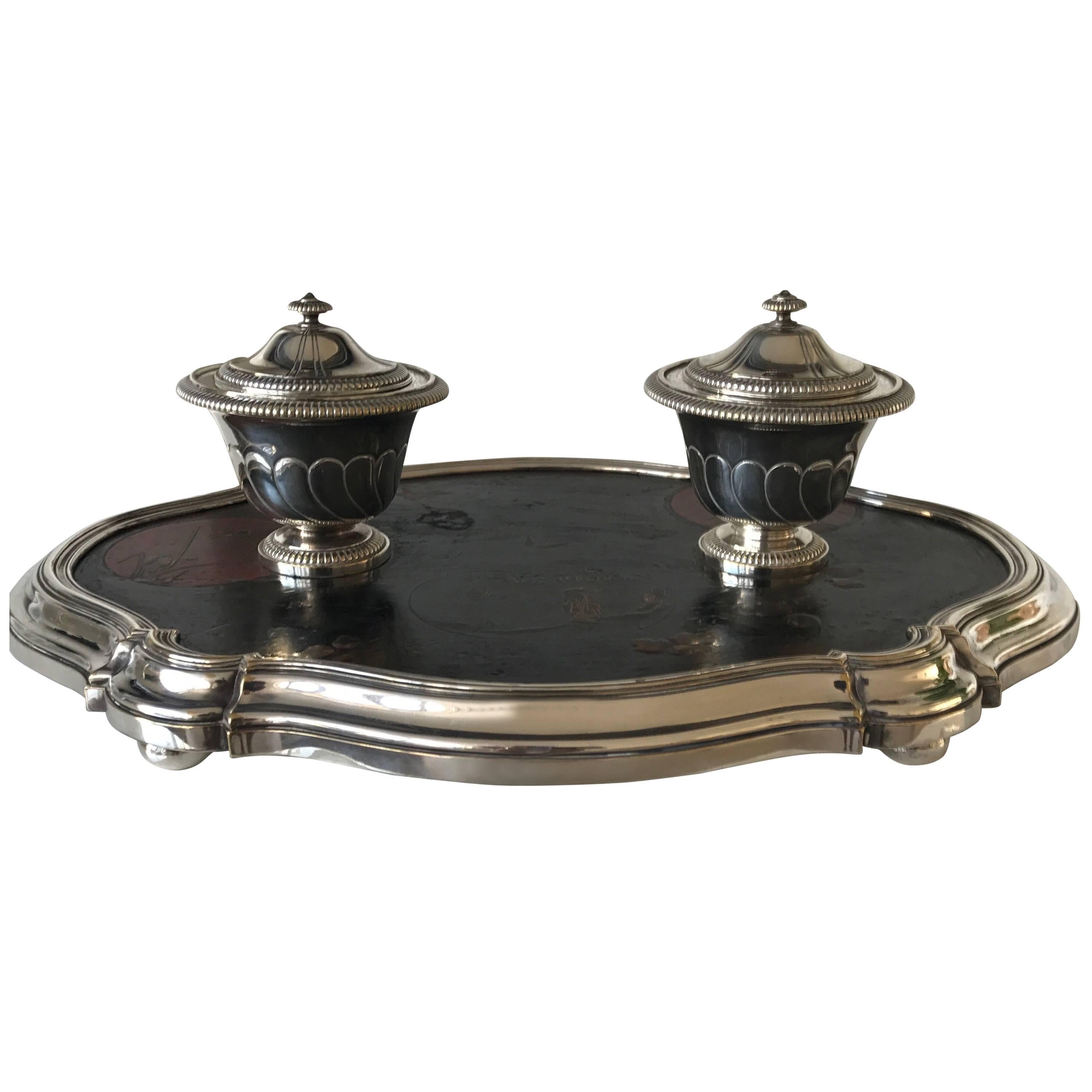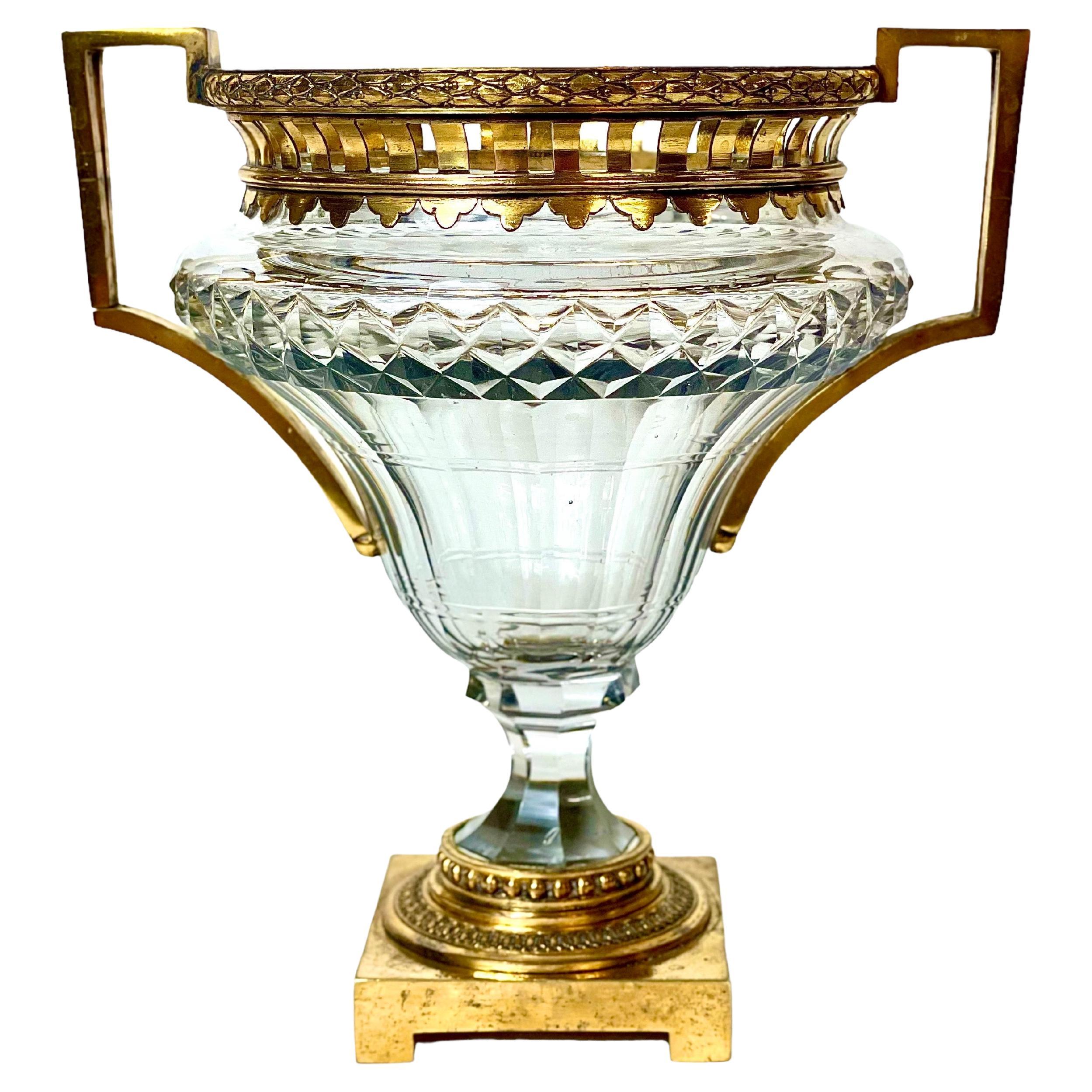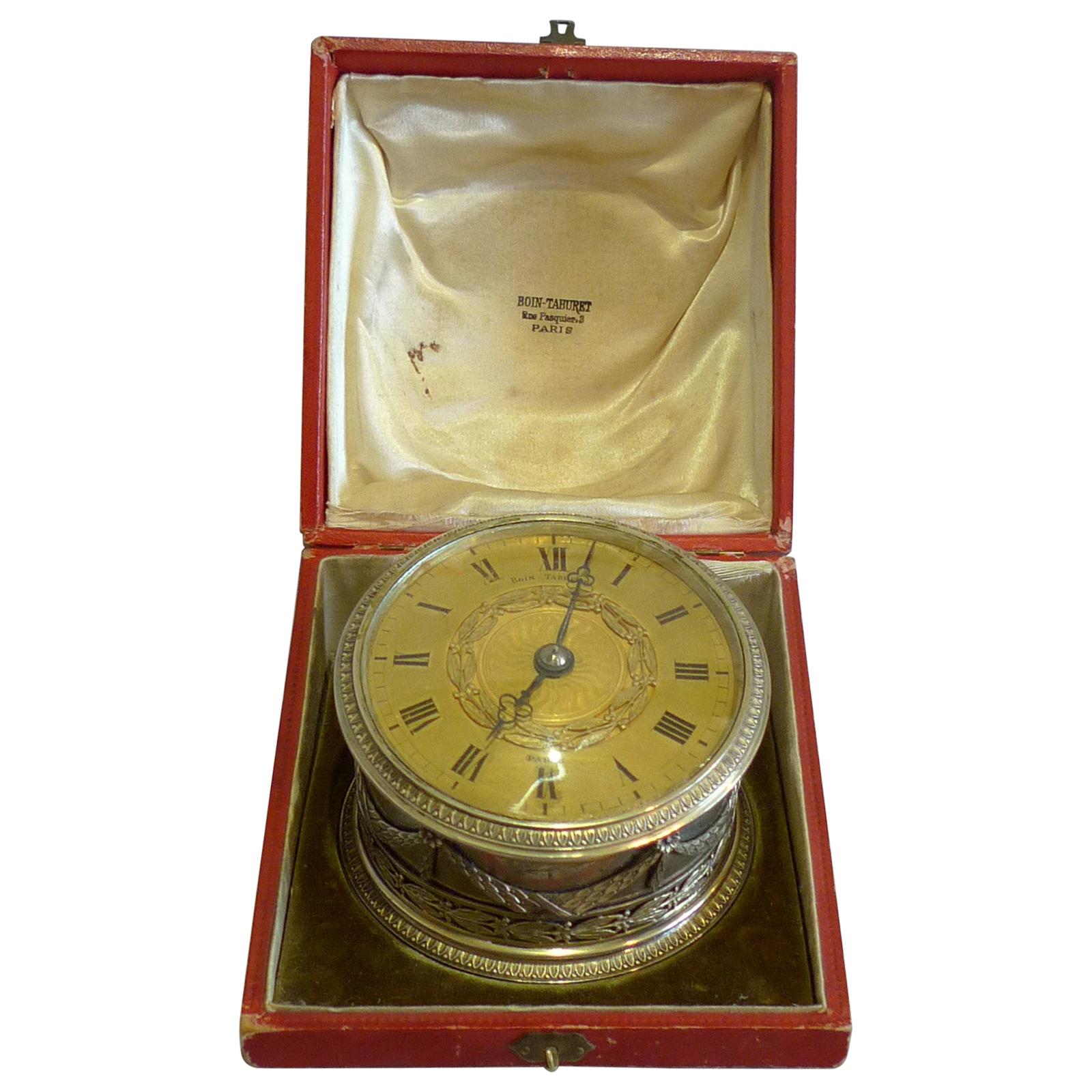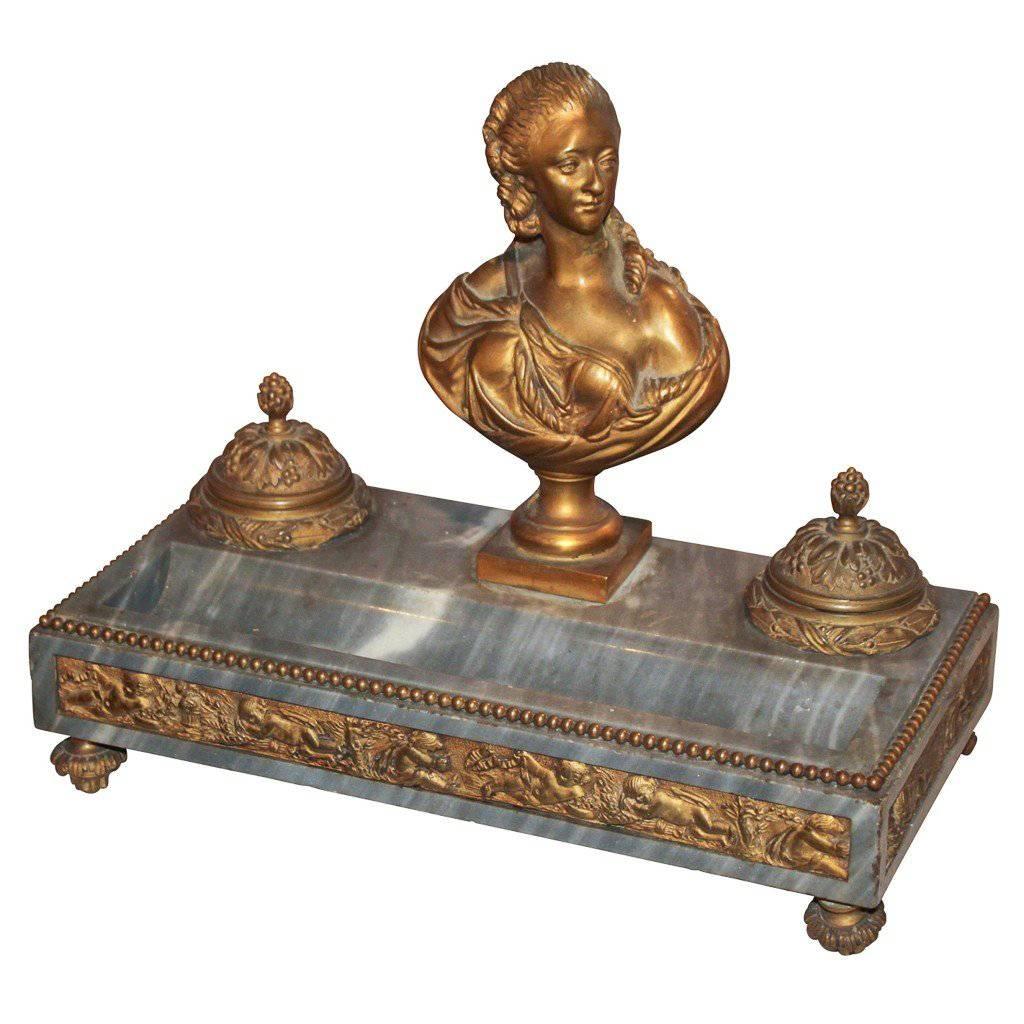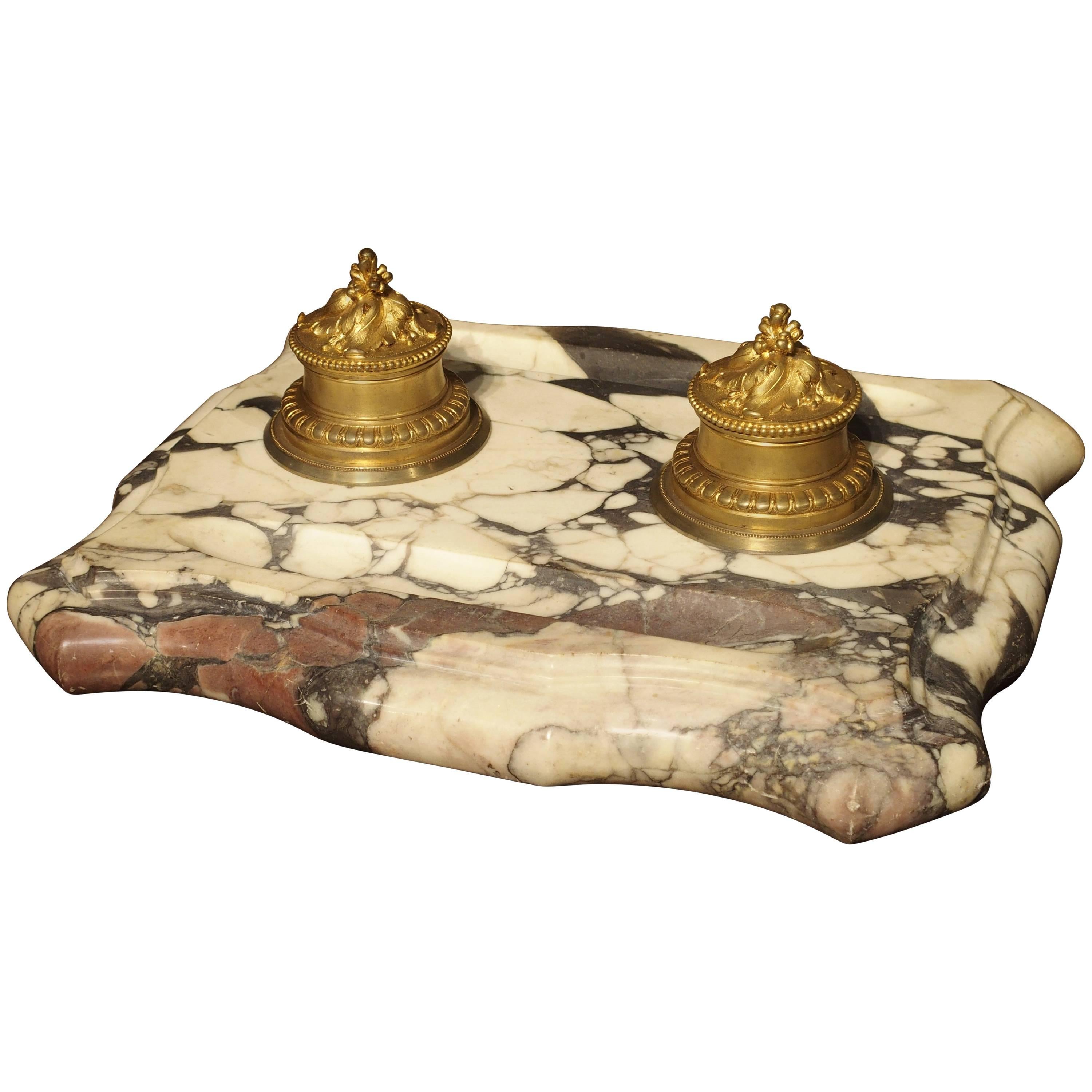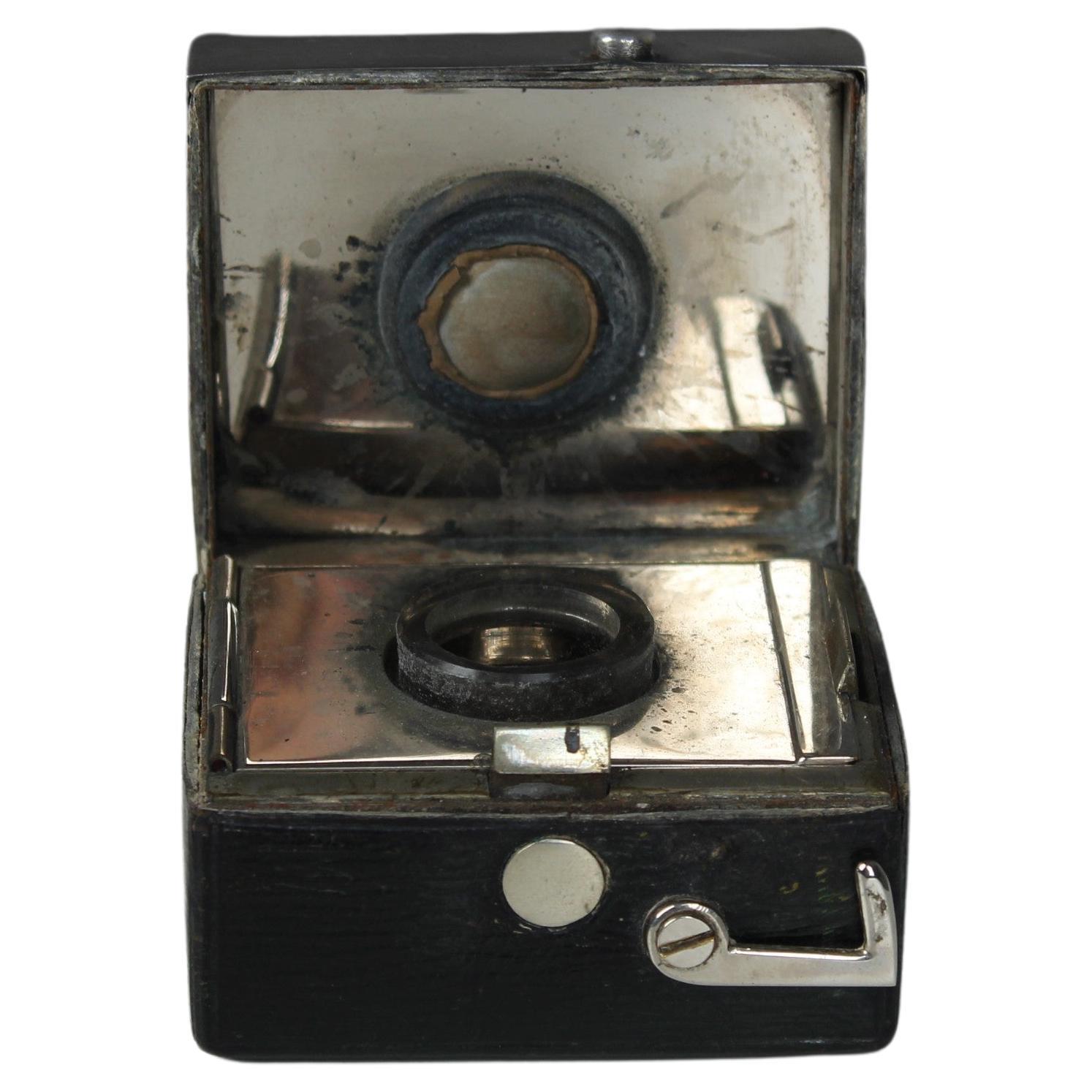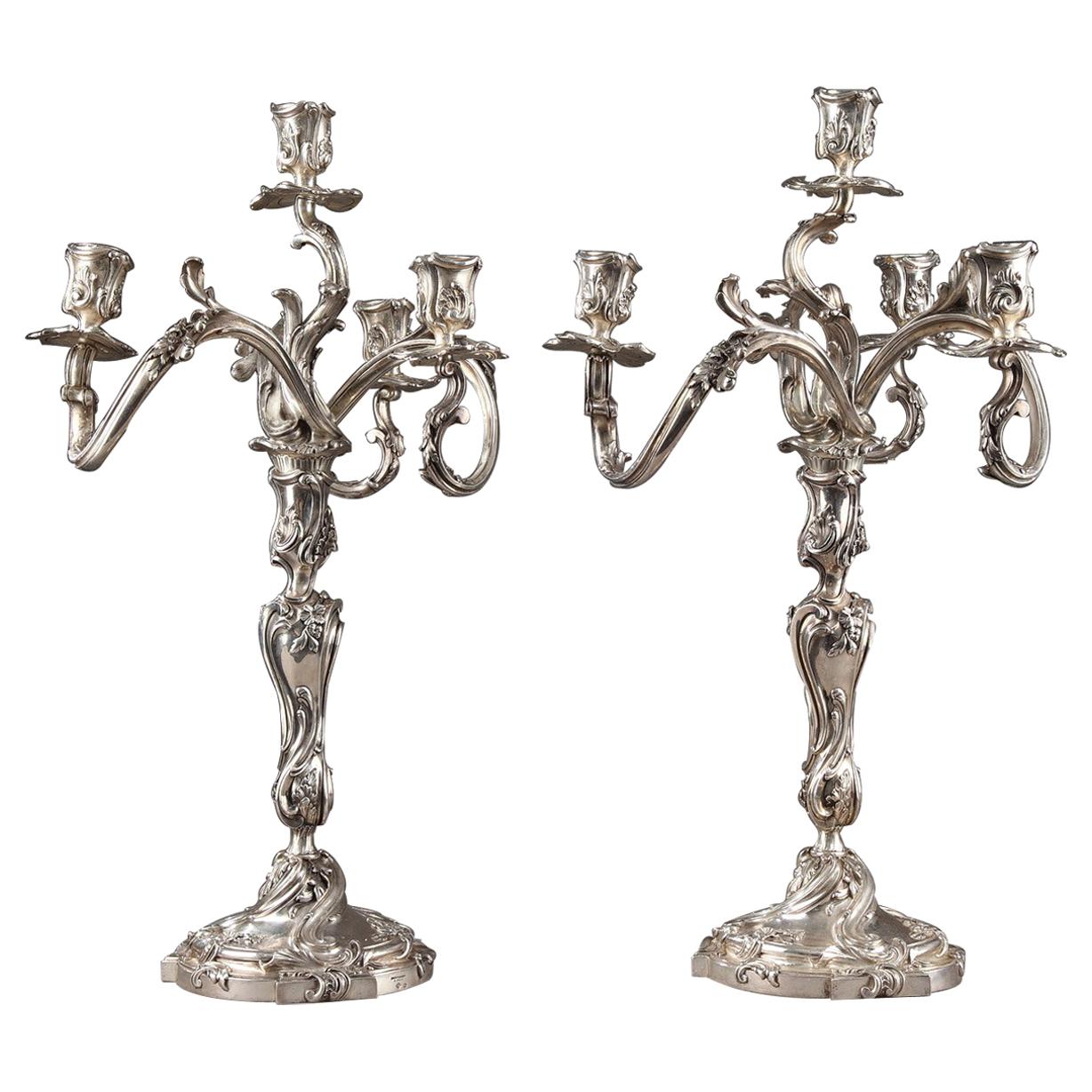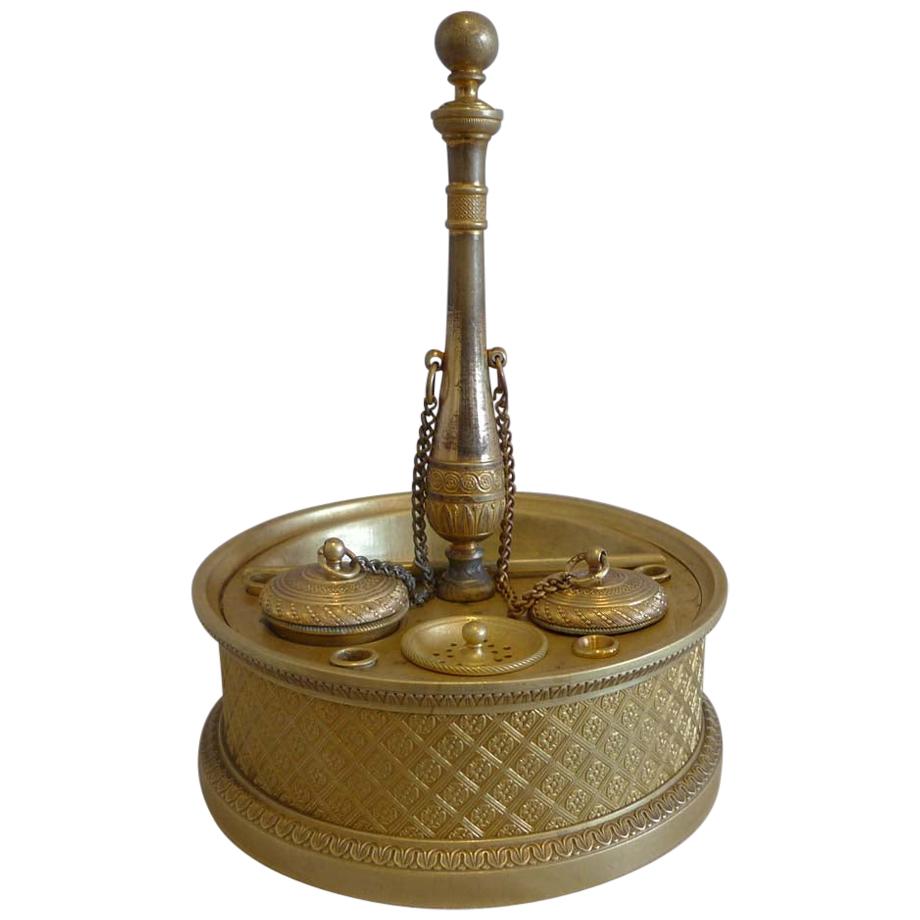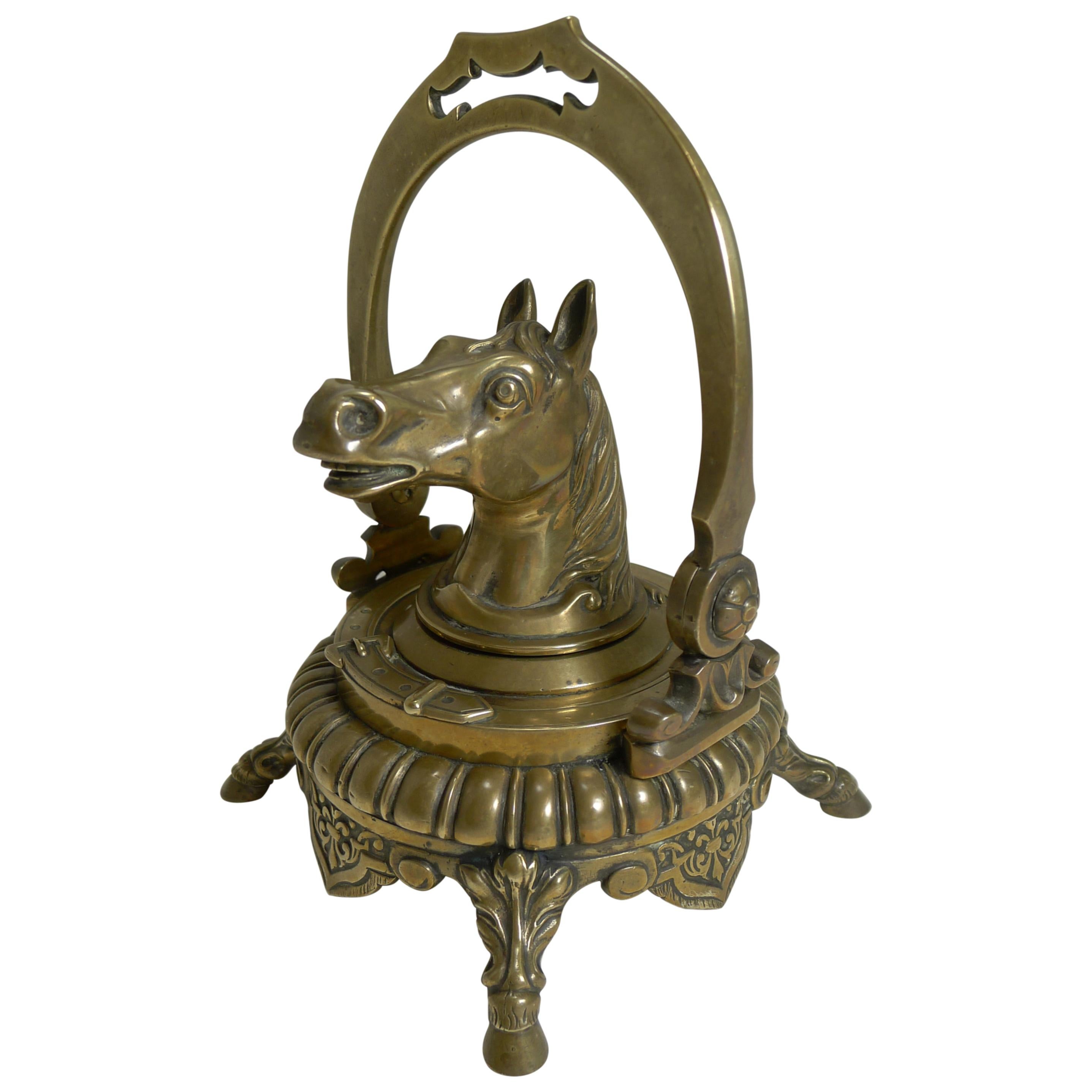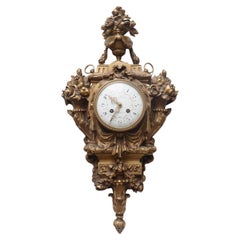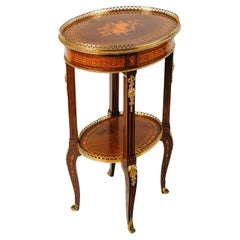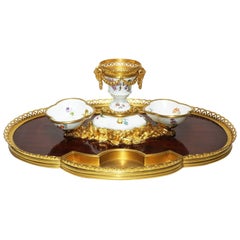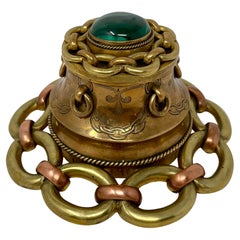
Boin-Taburet Paris Soapstone Inkwell, Ormolu and Chinese Lacquer, circa 1880
View Similar Items
Want more images or videos?
Request additional images or videos from the seller
1 of 14
Boin-Taburet Paris Soapstone Inkwell, Ormolu and Chinese Lacquer, circa 1880
About the Item
- Creator:Boin-Taburet (Maker)
- Dimensions:Height: 5.52 in (14 cm)Width: 13.78 in (35 cm)Depth: 9.85 in (25 cm)
- Style:Louis XVI (In the Style Of)
- Materials and Techniques:
- Place of Origin:
- Period:
- Date of Manufacture:circa 1880
- Condition:Wear consistent with age and use. 2 minor losses of lacquer as shown on the pictures.
- Seller Location:Saint-Ouen, FR
- Reference Number:1stDibs: LU2612322152592
About the Seller
4.9
Vetted Seller
These experienced sellers undergo a comprehensive evaluation by our team of in-house experts.
1stDibs seller since 2017
57 sales on 1stDibs
Typical response time: 2 hours
More From This SellerView All
- Famille Rose Qianlong Period Enamel Inkwell by L'Escalier de Cristal C.1880By L'Escalier de CristalLocated in Saint-Ouen, FRA Famille Rose Painted Enamel inkwell set Qianlong Period (1736-1795) by l’Escalier de Cristal It consists of a fretworked tray with raised edges in blackened wood surrounded by a fine gilded bronze ring, on which rests two Famille Rose Qianlong Period (1736-1795) hexagonal inkwells with pierced tops, one with original glass container, decorated with polychrome stylised flower heads and foliate scrollwork. This inkwell is characteristic of the productions of the Maison de l'Escalier de Cristal, it shows a hybrid realization, using ancient Asian elements, used as a container for feathers and ink. Stamped «Escalier de Cristal Paris» Circa 1880 L’Escalier de Cristal, Parisian firm created about 1800 by Mme veuve Desarnaud, famous under the French « Restoration » for its decorative objects combining crystal and bronze. She was awarded a gold medal at the 1819 Paris Exposition des Produits de l’Industrie for an outstanding gilt-bronze mounted crystal dressing table. Located in Paris, at the Palais-Royal, Galerie de Valois, L’Escalier de Cristal was bought out around 1830 by Boin, and then by Lahoche in 1840. The company owed its rise to a position amongst the most im-portant Paris decorative wares shops to Lahoche, who expanded considerably the business and entered later in partnership with his son-in-law to set up in 1852 Lahoche et Pannier...Category
Antique 1870s French Japonisme Inkwells
MaterialsOrmolu, Enamel
- A French Napoléon III Ormolu Cartel Clock by Susse Frères Paris circa 1870By Susse FreresLocated in Saint-Ouen, FRA French 19th Century Cornucopia Gilt-Bronze Cartel, by Susse Frères Paris An Ormolu Cartel in the shape of an escutcheon, with a circular white enamel dial, signed Susse Frères/A Paris, Arabic numerals for the hours and for the minutes. It's bordered by a frieze of pearls and surmounted by a falling laurel knot with a drapery in the lower part and flanked by cornucopias adorned with flowers and fruits. Rectangular base decorated with a garland of knotted flowers dying in a tapered, fluted barrel and damping, in the upper part, a flowery Medici vase. Louis XVI Style Circa 1870 Original gilding uncleaned The Susse company, a worldwide reknown foundry, began to cast pieces as soon as the first half of the 19th Century. Awarded medals...Category
Antique 1860s French Louis XVI Wall Clocks
MaterialsOrmolu
- A French 19th Century Louis XVI Style Side Table, circa 1880Located in Saint-Ouen, FRA very good quality 19th century French charming two-tier side table with a single frieze drawer parquetry inlaid, designed with Allegories of Geography and Astronomy, with pierced t...Category
Antique 1880s French Louis XVI Side Tables
MaterialsOrmolu
$3,954 Sale Price25% Off - French Japonisme Lacquered Metal Jardinière on Ormolu Stand Signed MarnyhacBy Maison Marnyhac 1, Edouard LievreLocated in Saint-Ouen, FRJardinière Médicis vase shape in copper with gold lacquered decoration on a burgundy background of a Japanese landscape with a volcano and an eagle ...Category
Antique 1870s French Japonisme Planters, Cachepots and Jardinières
MaterialsMetal, Bronze
$18,400 Sale Price20% Off - Pair of Porcelain Vases Ormolu-Mounted in Lamps by Gagneau Paris XIXth CenturyBy Gagneau ParisLocated in Saint-Ouen, FRPair of large Japanese Porcelain Cone Shape Vases with Imari decoration Important mounts in ormolu and gilded metal, the base decorated with a laurel wreath, the upper part of falling leaves and a frieze of knotted ribbon. The mounts signed Gagneau, 115 R. Lafayette. Circa 1860 With their original aluminium bulb cover and original gilding Vase it self Height 47 cm The Gagneau Company is one of the most famous lighting factories in Paris in the nine-teenth century, established in 1800 at 25 rue d'Enghien in Paris and later at 115 rue de Lafayette. She has participated in many exhibitions throughout this century. She began in 1819 with the Exposition des Produits de l'Industrie and later participated in the Universal Exhibitions where she was part of the jury in the category of art bronzes (class 25) at the Universal Exhibition in Paris in 1889. "Imari" was simply the trans-shipment port for Arita wares, from where they went to the for-eign trading outposts at Nagasaki. It was the kilns at Arita which formed the heart of the Japanese porcelain industry. Arita's kilns were set up in the 17th century, after kaolin was discovered in 1616. A popular legend attributes the discovery to an immigrant Korean potter, Yi Sam-Pyeong (1579–1655), although most historians consider this doubtful. After the discovery, some kilns began to produce revised Korean-style blue and white porcelains, known as Early Imari, or "Shoki-Imari". In the mid-17th century, there were also many Chinese refugees in northern Kyushu due to the turmoil in China, and it is said that one of them brought the overglaze enamel coloring technique to Arita. Thus Shoki-Imari developed into Ko-Kutani, Imari, and later Kakiemon, which are sometimes taken as a wider group of Imari wares. Ko-Kutani was produced around 1650 for both export and domestic market.Kutani Ware is characterized by vivid green, blue, purple, yellow and red colors in bold designs of landscapes and nature. Blue and white porcelain pieces continued to be produced and they are called Ai-Kutani. Ko-Kutani Imari for the export market usually adopted Chinese design structure such as kraak style, whereas Ai-Kutani for the domestic market were highly unique in design and are ac-cordingly valued very much among collectors. Ko-Kutani style evolved into Kakiemon-style Imari, which was produced for about 50 years around 1700. Kakiemon was characterized by crisp lines, and bright blue, red and green designs of dramatically stylized floral and bird scenes. Imari achieved its technical and aes-thetic peak in the Kakiemon style, and it dominated the European market. Blue and white Kakiemon is called Ai-Kakiemon. The Kakiemon style transformed into Kinrande in the 18th century, using underglaze blue and overglaze red and gold enamels, and later additional colors. Imari began to be exported to Europe when the Chinese kilns at Jingdezhen were damaged in the political chaos and the new Qing dynasty government halted trade in 1656–1684. Ex-ports to Europe were made through the Dutch East India Company, and in Europe the des-ignation "Imari porcelain" connotes Arita wares of mostly Kinrande Imari. Export of Imari to Europe stopped in mid-18th century when China resumed export to Europe, since Imari was not able to compete against Chinese products due to high labor costs. By that time, however, both Imari and Kakiemon styles were already so popular among Eu-ropeans that the Chinese export porcelain copied both, a type known as Chinese Imari. At the same time, European kilns, such as Meissen and English potteries such as Johnson Bros. and (Royal) Crown Derby, also imitated the Imari and Kakiemon styles. Export of Imari surged again in late 19th century (Meiji era) when Japonism flourished in Europe.Thus, in the western world today, two kinds of true Japanese Imari can...Category
Antique 1880s French Japonisme Table Lamps
MaterialsBronze
- 19th Century French Lacquered Wood ChandelierLocated in Saint-Ouen, FRA 19th century French polychromed lacquered wood eight-light chandelier Lacquered gloss cream wood with green, red and brown highlights Contained vase ending in foliated seed welcoming eight arms forming semicircles. The top has a frieze of red flowers in green interlacing and is topped with leaves and a painted egg cream...Category
Antique 1890s French Louis XVI Chandeliers and Pendants
MaterialsWood
$5,766 Sale Price30% Off
You May Also Like
- French 19th Century Louis XV Style Gilt-Bronze Encrier Inkwell by Boin TaburetBy Boin-TaburetLocated in Los Angeles, CAA very fine French 19th century Louis XV style gilt-bronze, mahogany and porcelain Encrier (Inkwell). The oval mahogany base surmounted with an ormolu mounted trim, dual-trays and fi...Category
Antique Late 19th Century French Louis XV Inkwells
MaterialsBronze, Ormolu
$6,450 Sale Price56% Off - Shipping Free, 19th Century Silvered Bronze Inkstand Signed Boin Taburet, ParisBy Boin-TaburetLocated in Lisse, NLLouis XV style inkstand with chinoiserie design, lacquered top. This rare and stylish inkstand is a work of the house Boin-Taburet, goldsmith in Paris. This impressive size inkstand...Category
Antique Late 19th Century French Louis XV Sheffield and Silverplate
MaterialsSilver Plate
- Antique English Ormolu and Malachite Inkwell, Circa 1860-1880.Located in New Orleans, LAAntique English ormolu & malachite inkwell, circa 1860-1880.Category
Antique Mid-19th Century English Inkwells
MaterialsMalachite, Ormolu
- Triptych of Silver Jars branded Boin Taburet a ParisBy Boin-TaburetLocated in Milano, ITBeautiful antique triptych of silver jars branded Boin Taburet in Paris, a very famous and highly prized 20th century French silver manufactory. The jars ...Category
20th Century French Neoclassical Jars
MaterialsSilver
- Crystal and Gilt Bronze Vase by Boin-TaburetBy Boin-TaburetLocated in LA CIOTAT, FRA classic and opulent crystal and gilt bronze Louis XVI-style vase, its goblet-shaped heavy crystal bowl diamond cut and fluted to refract the light...Category
Antique Early 1900s French Empire Vases
MaterialsCrystal, Bronze
- French Silver Desk Clock by Boin-Taburet, Paris, in Original CaseBy Boin-TaburetLocated in London, GBFrench silver desk timepiece clock very high quality. Napoleon III period. The case of beautifully cast silver with leaf and dart decoration to the base and to the bezel. The waste o...Category
Antique 1890s French Napoleon III Table Clocks and Desk Clocks
MaterialsSilver
Recently Viewed
View AllMore Ways To Browse
Antique Fair Paris
Antique Lacquer Tray
Antique Desk Chinese
Antique Chinese Desk
Antique Chinese Desks
Chinese Desk Antique
Chinese Antique Desk
Chinese Lacquer French Furniture
Chinese Bridge
Chinese Ormolu
Red Lacquered Desk
Red Lacquer Desk
Antique Chinese Stamps
Antique Chinese Stamp
Antique China Stamps
Hand Painted French Desk
Red Painted Desk
Lacquered Metal Tray
